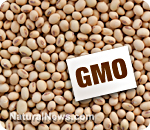With flamboyant red-orange beaks, white-feather caps, and peach-colored feet, gentoo penguins stand out against their drab, rock-strewn Antarctic habitat.
These charismatic waddlers, who populate the Antarctic Peninsula and numerous islands around the frozen continent, are the penguin world’s third largest members, reaching a height of 30 inches (76 centimeters) and a weight of 12 pounds (5.5 kilograms).
Gentoos are partial to ice-free areas, including coastal plains, sheltered valleys, and cliffs. They gather in colonies of breeding pairs that can number from a few dozen to many thousands.
Gentoo parents, which often form long-lasting bonds, are highly nurturing. At breeding time, both parents will work to build a circular nest of stones, grass, moss, and feathers. The mother then deposits two spherical, white eggs, which both parents take turns incubating for more than a month. Hatchlings remain in the nest for up to a month, and the parents alternate foraging and brooding duties.
Like all penguins, gentoos are awkward on land. But they’re pure grace underwater. They have streamlined bodies and strong, paddle-shaped flippers that propel them up to 22 miles an hour (36 kilometers an hour), faster than any other diving bird.
Adults spend the entire day hunting, usually close to shore, but occasionally ranging as far as 16 miles (26 kilometers) out. When pursuing prey, which includes fish, squid, and krill, they can remain below for up to seven minutes and dive as deep as 655 feet (200 meters).
Gentoo penguins are a favored menu item of the leopard seals, sea lions, and orcas that patrol the waters around their colonies. On land, adults have no natural predators other than humans, who harvest them for their oil and skin. Gentoo eggs and chicks, however, are vulnerable to birds of prey, like skuas and caracaras.
Gentoo numbers are increasing on the Antarctic Peninsula but have plummeted in some of their island enclaves, possibly due to local pollution or disrupted fisheries. They are protected by the Antarctic Treaty of 1959 and received near threatened status on the IUCN Red List in 2007.
















